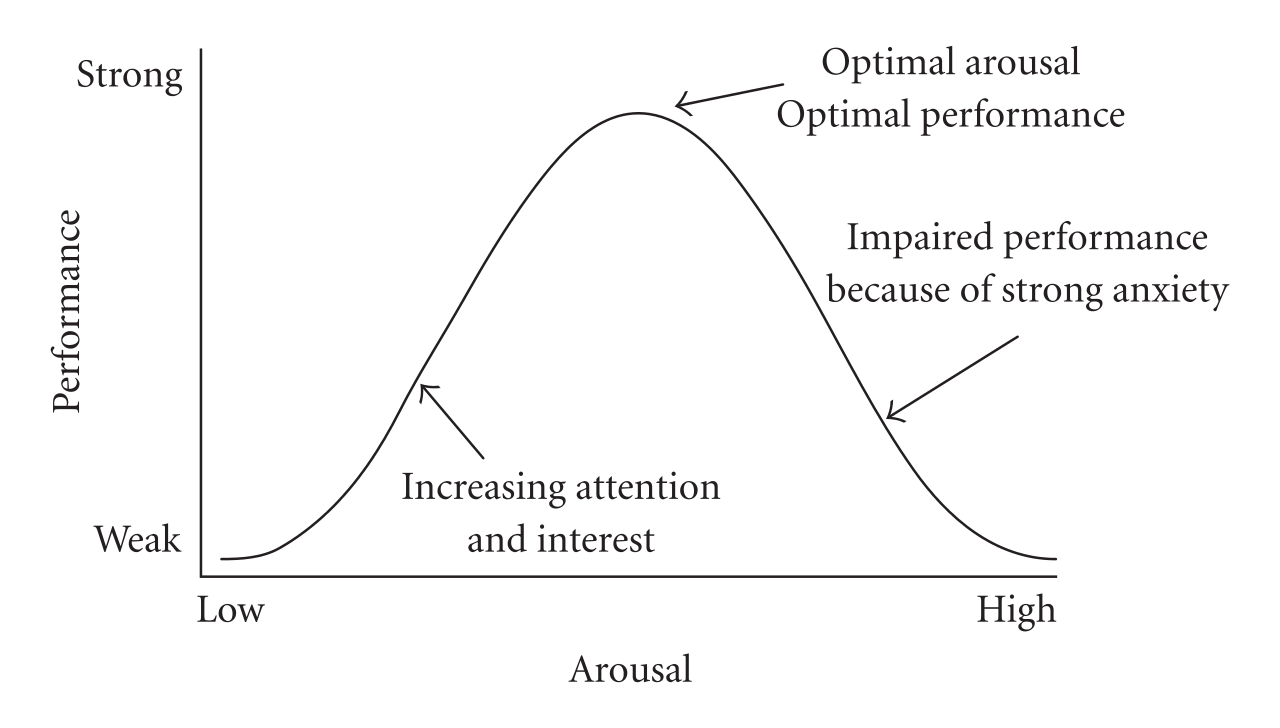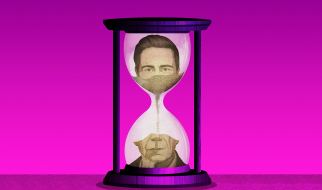Draft published July 23, 2015
The goal of this guide is to provide an overview of how to optimally ingest psychostimulants for studying. I will attempt to provide general, non-technical guidance in order to promote an effective and safe method to take psychostimulants. By psychostimulants I refer to the common pharmaceutical amphetamine formulations such as Adderall and Ritalin.
 Dextroamphetamine
Dextroamphetamine
Non-medical use of psychostimulants including amphetamines and methylphenidate is widespread during midterms and finals[3][4][5]. Studies show a prevalence between 35.5%[1] to 72.8% [2] of students taking stimulants during their academic career. The fact that students take psychostimulants for a ?non-medical? purpose is granted, and I do not need to provide references in the endnotes to prove such ? but the study titled Tweaking and Tweeting: Exploring Twitter for Nonmedical Use of a Psychostimulant Drug (Adderall) Among College Students is just delectably titled. However, most students have little or no idea how to properly dose the various psychostimulants that are commonly available. First, I will discuss the basics of some common varieties of amphetamine-based stimulants; however, if you just want general advice then skip ahead to the section ?general advice on dosing? or the tips. These are the more common weapons of choice in the American arsenal.
- Adderall ? is composed of a mixture of the salts of the stereoisomers of amphetamine: 75% dextroamphetamine / 25% levoamphetamine. D-AMPH is notably more potent, euphoric. Amphetamine salts are available in 5mg, 10mg, 15mg, 20mg, and 30mg tablets.
- Adderall XR ? is an extended release capsule composed of the same 75% D-AMPH / 25% L-AMPH ratio. These are available in 5mg, 10mg, 15mg, 20mg, 25mg, and 30mg gelatin capsules.
- Vyvanse ? or lisdexamfetamine is a prodrug for D-AMPH. Lisdexamfetamine is inactive as it must be broken down by enzymes which cleave the L-Lysine from the dextroamphetamine releasing the D-AMPH. It is available in 10mg (pink), 20mg (ivory), 30mg (white/orange), 40mg (white/blueish green), 50mg (white/blue), 60mg (blue/aqua) and 70mg (blue/orange) capsules.
- Ritalin ? methylphenidate (various doses).
- Ritalin XR ? methylphenidate (various doses).
- Concerta ? a specially formulated methylphenidate extended release capsule that is available in 18, 27, 36, and 54mg varieties.
Less commonly prescribed stimulants:
- Focalin ? dexmethylphenidate is a more potent stereoisomer of methylphenidate available in 2.5, 5, and 10mg tablets.
- Focalin XR ? dexmethylphenidate available in 5, 10, 15, 20, 25, 30, 35, and 40mg varieties.
- Dexedrine ? dextroamphetamine in its pure form. Available in 5, 10, and 15mg capsules.
- Desoxyn ? this is likely the hardest to come by, desoxyn is the brand name for prescription methamphetamine tablets (5mg, 10mg) that are only indicated for ADHD and as a anorectic for obesity (also used sparely as a treatment for narcolepsy).
Then there are a large variety of illegal stimulants or those with grey-legality such as the fluorinated amphetamines (2-FA, 3?FA, 4-FA, 2-FMA, 3-FMA etc?.) Certain fluorinated amphetamines are far more recreational and ?functional? such as 4-FA which may act as a partial serotonin releasing agent in addition to being a reuptake inhibitor of dopamine, serotonin and norepinephrine [3][4]. Therefore, at higher dosages 4-FA has qualities more akin to MDMA ? complete with bruxism, hyperthermia, empathogenic enhancement etc? 3-fluoroamphetamine [3-FA] and 2-fluoromethamphetamine [2-FMA] are similar in potency and effect to dextroamphetamine or methamphetamine. That?s all I will mention here, for now. For further anecdotal reports see this reddit thread.
General Advice on Dosing
D-AMPH?s half-life is roughly 9?12 hours, L-AMPH?s half-life is 11?14 hours, while methylphenidate?s half-life is only 2?3.5 hours. This means if you take even 5mg of adderall at 7PM, don?t expect to sleep until 4?6AM. This is of course without any sleep aids, but amphetamine can easily disrupt sleep quality regardless. You may be able to sleep on a moderate dose of amphetamines but don?t count on it. This is why planning is important. If you take adderall for an exam, then it would be best if you take it 1?1.5h before your exam. If you are taking amphetamines to study for an exam, then study for your exam roughly the same time every day. This will better condition you to perform well.
Taking amphetamines on an empty stomach is good, but to further potentiate the duration and effect make sure your stomach is not acidic by avoiding things like orange juice before and during ingestion. Ingesting alkaline substances like antacids such as Tums (calcium carbonate) or Gaviscon (sodium/potassium bicarbonate) can increase the subjective potency of amphetamines. However, because of the anorectic effects of amphetamines it is usually good to have a high protein meal before dosing ? otherwise you are likely to go most of the day without eating. ?Tweaking out and tweeting? is not desired per se.
Amphetamines can certainly keep you awake studying all night, but this will be detrimental in the long run. You begin sleeping at odd, irregular hours and soon ? even with a large supply of amphetamines ? you will become physically and mentally burnt out. This is not recommended. Amphetamines enhance focus, cognition, and your ability to stay awake for hours ? yet balance is still needed. ?The dose makes the poison? is a universal maxim for pharmacological investigation (and arguably a philosophical notion not unlike the Aristotelian ?golden mean?, a middle between two extremes). Well, by taking amphetamines you are already entering the extreme but by doing this you must respect the drug.
Tips on how to Properly Take Psychostimulants
- Don’t take ?too much? ? meaning, if you have no tolerance to amphetamines there is no need to take an entire 20 or 30mg adderall. The beneficial effects of amphetamines are on a continuum; that is at a certain point the negative effects (anxiety, headaches, irritability) will outweigh the positives. One model of understanding this comes from the Yerkes-Dodson Law which states that performance is enhanced with greater arousal. Grantedly, the Yerkes-Dodson law comes from rudimentary studies with mice in the early 20th century but the following graph is a rough approximation of the principle:
 A somewhat poor albeit useful diagram of the Yerkes-Dodson law
A somewhat poor albeit useful diagram of the Yerkes-Dodson law
- Titrate your dosage with increments of 5?7.5mg if it?s amphetamines and by increments of 10?15mg for methylphenidate. Psychiatrists usually don?t prescribe amphetamines above 60mg/d and 60?80mg for methylphenidate. Total doses (if you are amphetamine naive) should not exceed 20?30mg daily, or 40?50mg for methylphenidate. This is a guideline, not a rule and even 20?30mg daily may be far more than you need. Remember this: you can always take more, but you can?t take back what you?ve already ingested.
- Hydrate frequently and attempt to eat before taking larger doses as dopaminergics can greatly reduce appetite.
- See supplements and sidepoints below for additional tips to enhance either acute or chronic psychostimulant use.
- Perhaps take a look at this blog entry by a psychiatrist (or my highlights below), who manages to give mostly solid advice on how to take amphetamines in order to study effectively: How To Take Ritalin Correctly
Here?s pretty much all the pertinent parts of his article:
That said, the key to amphetamines and Ritalin is to stop thinking of them as stimulants, and to think of them as reinforcers.
Let?s conceptualize how these drugs work. Imagine getting a brain scan while you are performing a task. The parts of your brain you are using for the task will light up, brighter than those you aren?t using.
Now you drink coffee (1). The whole brain lights up brighter, proportionally.
Now you take amphetamines. The parts of your brain that you are using light up brighter, but the parts you aren?t using go darker. Get it? Caffeine is a global brain stimulant, while amphetamines focus your attention, reducing distraction.
This is entirely selective and controlled by you. You have to decide what you want to focus your attention on. If it?s reading, the reading parts of your brain will be brighter. But if you stop reading and decide to talk to your friend on the phone, you know, the hot one with the hotter roommate, then you?ll be more focused on that (obviously). Attention is always decreased when it is split among several tasks. In other words, you can only concentrate on one thing at a time, even though it may feel like you are doing two things at once.The power of amphetamines is this: you take them again, in the same dose, 30 minutes before your test.
In a metaphoric sense, taking the amphetamines during the test, under the same circumstances as you had been previously studying, will ?remind? the brain of that context. If you see a question that ?resembles? something you studied, your mind will be primed to recall it better.
Remember I said you can only concentrate on one thing at a time, that attention decreases when it is split? The trick here is to make everything about studying into one large ?thing.?
Here?s an example: if you listen to a symphony, you will hear music. Musicians, however, hear both the music and every single instrument. They can attend to each instrument individually and simultaneously hear how each instrument fits into the larger context. A non-musician can?t do that. If he?s concentrating on the oboe, he doesn?t ?hear? the violas.
Studying has to become a large symphony, everything doing its part correctly, expectedly. So on performance day (testing) you play the same symphony. You?re not trying to concentrate on each part, if you?ve practiced enough it should be second nature. The amphetamine helps facilitate this.
Supportive Supplements:
- Magnesium glycinate can attenuate and reduce bruxism (jaw clenching and teeth grinding). Magnesium is also potentially useful in helping to reduce long term amphetamine tolerance. Magnesium glycinate is a chelated form of magnesium that will not produce gastrointestinal side effects unlike many magnesium supplements that usually contain magnesium oxide. (Magnesium is also a generally useful supplement regardless of amphetamine use).
- Amphetamine has the potential to cause oxidative damage to neuronal cells, but regardless of neurotoxicity of amphetamine and its metabolites the following antioxidants are useful: CoQ10, Vitamin C, Acetyl-L-carnitine and ALA (alpha lipoic acid). Acetyl-L-carnitine (ALCAR) is synergistic with ALA and itself a mild stimulant and relatively well studied supplement.
- Melatonin is an endogenous hormone that serves as an antioxidant and regulator of a large variety of bodily processes, notably as a regulator of circadian rhythm. 500?750mcg before bed will assist in sleep initiation.
- Amphetamines (especially in larger doses) can cause erectile dysfunction. In most cases L-arginine can easily resolve flaccidity. Agmatine is also an option that can be useful in this area.
Monoamine-oxidase inhibitors (MAO-i)
- MAOi?s occur in various plants such naturally as harmala alkaloids ? examples of such plants would include Banisteriopsis caapi (Yaje) and Peganum harmala (Syrian Rue). Yaje is a necessary compound within Ayahuasca, as N,N-dimethyltryptamine (DMT) will not be active orally due to it being quickly metabolized and destroyed by monoamine-oxidase in the gut. MAOi?s will greatly potentiate any amphetamine or monoaminergic drug.
- Shulgin made an extract from 28g of Peganum Harmala and reported it in TiKHAL under entry #13 Harmaline. Here is an excerpt of his bioassay below:
This time it came on very fast. That tremendous buzz on the other side of which are the wondrous realms of the subconscious. The most memorable impressions from this trip were of weird animals. I imagined myself spinning on a merry-go-round of strange winged creatures. I started to feel very sick and negotiated my way to the bathroom to face the inevitable ? voiding from both orifices simultaneously. It proved cathartic, and released me to experience the state more fully. I remember traveling to jungle-like places, full of imagery of vines, fountains, and animals. Minutes seemed like hours as I roamed in these spaces. Though the sensory effects were very disturbing when I got up, given high dose level, I could easily ignore my body when laying down and traveling in my mind.
MAO-i?s are generally something you should definitely avoid in conjunction with taking amphetamines, as are mixing other recreational drugs such as cocaine (which would dull or block many of the enhancing effects of amphetamine? or potentially double the euphoria [conflicting studies/anecdotes as the mechanism of action of cocaine is not quite determined but cocaine and methylphenidate have similar mechanisms of action]) ? etc? see the following regarding cocaine:
- Dopamine reuptake transporter (DAT) ?inverse agonism? ? A novel hypothesis to explain the enigmatic pharmacology of cocaine
Cocaine?s short half-life of 30min-1h is an extremely poor choice for studying. This should be obvious!
Also smoking cannabis while on amphetamines can easily become more anxiogenic than cannabis alone. Additionally, drinking alcohol with amphetamines is not advised.
Other stimulant options/adjuncts:
- Nicotine ? nicotine gum can be extremely useful during exams, nicotine is a proven nootropic, neuroprotective agent, and memory enhancer that is sometimes prescribed for patients suffering dementia or Parkinson?s.
- Caffeine ? obviously, but caffeine pills can become portable, accessible tablets of instant caffeinated induced stimulation: viz. you know longer need to brew coffee or pay $4 for a Vanilla Latte at Starbuck?s.
- Coffee and tobacco contain various MAO-i constituents in small measure in the forms of harmala alkaloids (harmine, harmaline, tetrahydroharmine etc?). Coffee is the most accessible of stimulants and can be a useful adjunct to potentiate amphetamines.
- There are a variety of peptides available for intranasal spray or subcutaneous injection: Semax, N-Acetyl-Semax, and N-Acetyl Semax Amidate among others. These can be used to potentiate amphetamines and enhance cognition, although the effects on memory and mood seem to vary wildly from person to person with the major constant being enhanced stimulation. Additionally, versions of Selank have similar albeit more anxlioytic effects to semax ? in either case Selank and Semax are prescribed in Russia and some Eastern European countries. These peptides are similarly grouped within the nootropic class of drugs that are widely discussed online.
- Nootropics themselves convey a large and unique class of drugs and supplements that are designed to enhance cognitive function. I would point you to the /r/nootropics subreddit and longecity as these forums have extensive coverage of nootropics. I will likely (hopefully) write several articles on nootropics in the future. The most common and most studied racetam, Piracetam, has been shown to likely potentiate amphetamine.
- Modafinil is a wakefulness promoting agent, a eugoric that has a uniqueness in subjective quality of the substance in addition to a particular pharmacological mechanism of action. The aforementioned link is to Gwern?s website which is an astoundingly long overview of modafinil?s pharmacological, legal, and other aspects.
Recall that mixing stimulants and taking too much of any sole or combination of stimulatory drugs can lead to residual anxiety and therefore a decrease in cognitive ability and productivity.
Are amphetamine substances even effective for memory enhancement and studying in healthy subjects? This is a question with a variety of contradictory research, as some studies show that amphetamines merely show an increase in subject?s feeling of having done better on a task where their performance remains mostly static. Nonetheless, if amphetamines merely increase motivation, energy, and stamina for healthy subjects then it can be a valuable improvement in productivity.
Prescription Stimulants? Effects on Healthy Inhibitory Control, Working Memory, and Episodic Memory: A Meta-analysis
http://www.mitpressjournals.org/doi/10.1162/jocn_a_00776
Endnotes:
- Illicit use of psychostimulants among college students: A preliminary study http://www.tandfonline.com/doi/abs/10.1080/13548500220139386
- A survey of nonmedical use of tranquilizers, stimulants, and pain relievers among college students: patterns of use among users and factors related to abstinence in non-users. http://www.ncbi.nlm.nih.gov/pubmed/25150402
- Misuse of prescription stimulants among college students: a review of the literature and implications for morphological and cognitive effects on brain functioning. http://www.ncbi.nlm.nih.gov/pubmed/24099359
- Contrast of medical and nonmedical use of stimulant drugs, basis for the distinction, and risk of addiction: comment on Smith and Farah (2011).http://www.ncbi.nlm.nih.gov/pubmed/21859175
- Tweaking and Tweeting: Exploring Twitter for Nonmedical Use of a Psychostimulant Drug (Adderall) Among College Students http://www.ncbi.nlm.nih.gov/pmc/articles/PMC3636321/
- The effects of non-medically used psychoactive drugs on monoamine neurotransmission in rat brain http://www.sciencedirect.com/science/article/pii/S0014299906013811
- Comparison of 4-chloro-, 4-bromo- and 4-fluoroamphetamine in rats: Drug levels in brain and effects on brain serotonin metabolism http://www.sciencedirect.com/science/article/pii/0028390875900994
Drugbank links:
- Amphetamine
- Dextroamphetamine
- Lisdexamfetamine
- Methamphetamine
- Methylphenidate
- Dexmethylphenidate


